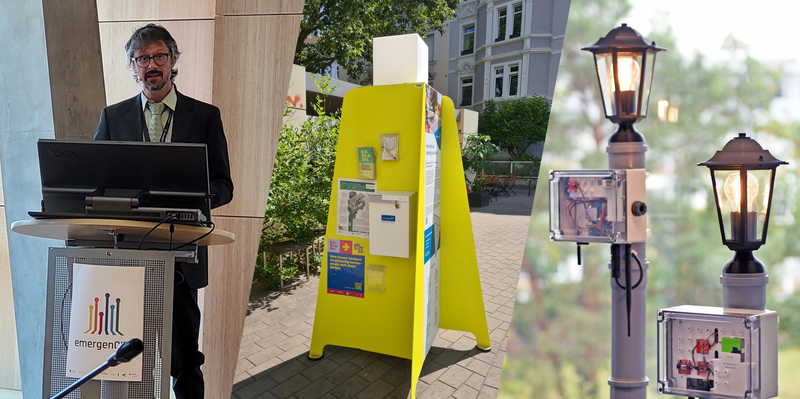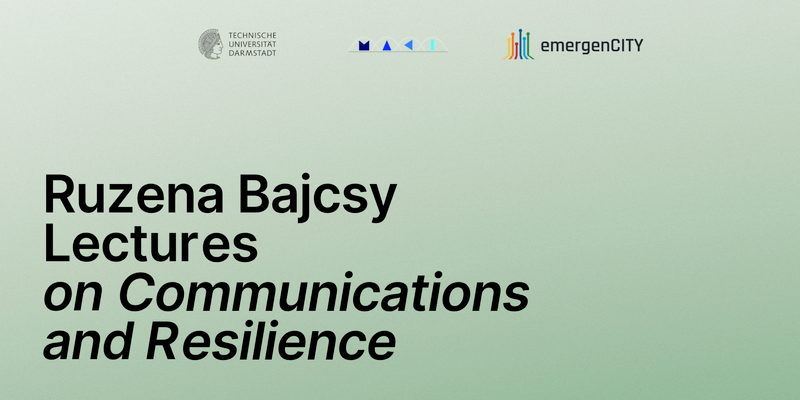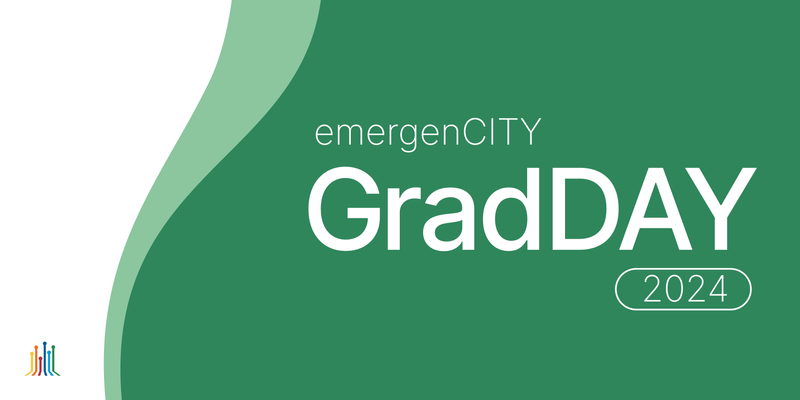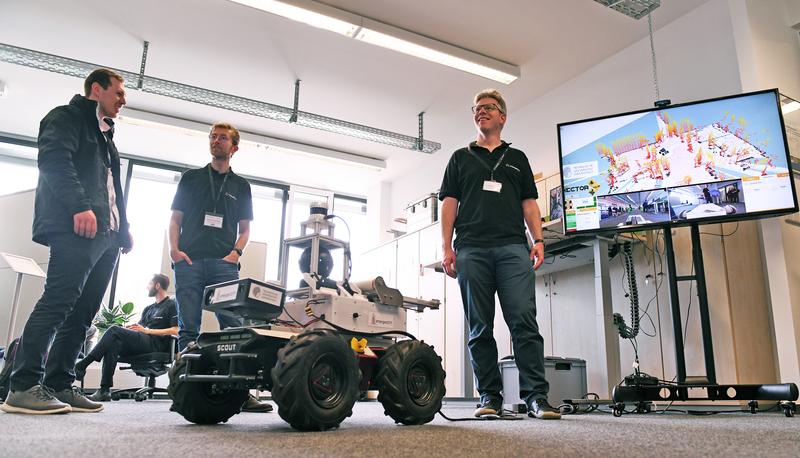Research turns into practice: emergenCITY is not only scientifically accompanying the transformation of Darmstadt’s Lichtenbergviertel into “Heinerblock”, but contributes technology. Sensor boxes that can collect data on noise levels, air quality or temperature, for example, are to be installed on street lamps in the Lichtenberg district starting next year. With their help, future changes in the microclimate due to reduced transit traffic and more open spaces in the Heinerblock should be observable and verifiable.
emergenCITY coordinator Matthias Hollick presented these sensor boxes to the project participants at the Heinerblock Info Forum. In doing so, he explained the procedure of how and which data is collected, processed and published. “All data remains in the box, there is no transmission,” Hollick said. There are no cameras build in the boxes, only sensors, and where a lamppost is located too close to a house, no box will be placed. Furthermore, the boxes will in principle only collect pseudonymized data in a local classification, which will be then deleted again.
Data protection is thus the guiding principle that Hollick and his team apply to the development and implementation of the sensor box. But just as important to emergenCITY research is the dialogue and research around the acceptance of such technologies by local citizens. For this reason, emergenCITY managing director Katharina Kleinschnitger and emergenCITY scientist Frank Hessel were also attending the Planungscafé with the neighborhood’s citizens to present the sensor boxes, answer questions and take feedback from the residents of the future Heinerblock.
Kleinschnitger and Hessel are already continuing this dialogue this week: at the first nationwide Superblock Conference, which will take place from November 3 to 5 in Darmstadt, the two will also present the sensor boxes as well as emergenCITY’s contribution to the transformation of the Lichtenbergblock in general. The conference is already fully booked, but a waiting list is maintained. More info concerning our research for the Heinerblock is available also on our website.



